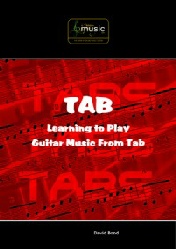



Learn from the best teachers around the world from the comfort of your own home
Featured Teachers
- Bill Hart
- Duncan Jones
- Emrys Baird
- Jim Covington
- Colin Cartmell
- Daniel Realpe
- Simon James
- Pauric Mather
- Niels Vejlyt
- David Bond
- Matt Warnock
- Andrea Basiola
- MDS
- Carlos Viegas
- Matt Pearce

Learn the following styles:
- Rock
- Blues
- Country
- Classical
- Jazz
- Jazz Fusion
- County Rock
- Pop
- Bluegrass
- Slide
- Heavy Metal
- Shred

E-books Available from our shop:
- Deryl Gabel
- David Bond
- Duncan Jones
- Matt Warnock
- Pauric Mather

Blog
We have an extensive range of blog articles from guest writers such as:
Tom Hess
Andrea Basiola
Colin Cartmell






| Terms of Use | Privacy Policy | Teachers Wanted | Downloads | Legal | Returns Policy | Prize Rules|



Internet Guitar Lessons
Professional Lessons
At Affordable Prices




Connect with us:




Your Metronome Will Either Help You Or Hurt You...Find Out Why
by Tom Hess
Do you think that using a metronome is important for improving your guitar playing?
On this issue, guitar players tend to fall into one of the following groups:
Some guitarists almost never use a metronome in their guitar playing.
Others always (or almost always) practice and play guitar with a metronome.
When asked about why they practice guitar the way they do (without a metronome), guitarists in the first group often say that they want to avoid having to stick to a rigid tempo while playing guitar. They claim that learning to play guitar without a metronome helps their guitar playing to be more expressive and musical. Others in this group just don’t think much about the metronome.
The guitarists in the second group (those who play guitar with a metronome almost all the time) argue that the metronome is key to improving their guitar playing. Therefore, the guitarists in this group believe it is essential to practice everything to a metronome to develop tight rhythm guitar playing skills, increase guitar speed and track guitar playing progress.
Which Group Of Guitar Players Are You In?
Fact is both of the above belief systems are incomplete and misleading ways to approach the process of learning to play guitar. Here is why:
You need to alternate between practicing and playing guitar both with and without the metronome, but to be effective you need to do this in a strategic way, not a random one. You must have a diverse set of targeted guitar practice techniques (and know when and how to apply each one) to successfully overcome every guitar playing challenge you face. When it comes to practicing guitar with a metronome, there are times when using it is necessary and there are other times when the metronome will distract you from improving in the areas you need to master.
There are multiple ways of using a metronome in your guitar practice routines.(Consciously choosing "not" to use a metronome "sometimes" is one type of such strategy.) It is NOT enough to simply decide to practice guitar with a metronome a certain % of the practice time (such as 50% on and 50% off). To get the most benefit from using a metronome, you need to know when, how and why to use it (or not use it) depending on what goals you are trying to achieve in a given practice session.
Although the complete list of strategies for using a metronome when learning to play guitar is beyond the scope of this article, I want to share with you several of the most important roles that the metronome should play in your guitar playing (and also explain when/why to avoid using it). These ideas will help you to improve your guitar playing much faster.
How To Use A Metronome To Improve Your Rhythm Guitar Playing
The guitar players who never (or very rarely) practice guitar using a metronome say that they want to have the freedom of not having to stick to a rigid tempo in order to be more expressive with the music they are playing. Although this style of guitar playing has its place in music (more on this below), most people who only practice guitar without the metronome typically struggle whenever they do have to play in strict time. It is important to be able to play by varying the tempo, dynamics and other musical elements for expressive reasons, but it is equally as important to be able to lock perfectly in time with a particular tempo (for "different" expressive goals). If you have always stayed away from practicing playing guitar to a metronome for the reasons mentioned above, chances are that your timing needs improvement.
Unlike the concept of guitar speed, practicing guitar with a metronome is a very critical part of what actually "develops" your ability to play guitar tight (in time). As you play, you can tell easily if your guitar playing is in time if you can make the sound of the metronome click "disappear" on most (or all) of the strong beats of the music. If you are playing in perfect time, the notes you are playing will line up precisely on top of the metronome click, creating an illusion that the click has become silent (disappeared). If you can achieve this goal, you are making excellent progress.
How To Use A Metronome To "Test" Your Guitar Playing
Contrary to popular belief, practicing guitar with a metronome does NOT help you to "improve" your guitar technique or "increase" your guitar speed. As I discuss in this free mini course on how to develop guitar speed, there are specific elements that go into guitar speed that must be trained and refined, often at super slow speeds without the metronome. The metronome is then used mainly as a TEST to establish how well you have mastered these elements. The speed at which you can play will indicate whether or not you need to do additional practicing (without using the metronome) to overcome the technical flaws preventing you from playing guitar as fast as you want.
So, before you start using a metronome to "measure your improvement" in speed, you need to spend a substantial amount of time refining the fundamental technical components that make guitar speed possible (without using the metronome). This goes totally against the conventional wisdom of practicing everything to a metronome in order to improve your guitar technique, but is a much more effective way of developing this skill (check out the free mini course above to fully understand why this is true and how you should practice to build guitar speed).In fact, it is this belief (that more work with the metronome is the key to overcoming one's guitar speed/technique plateau) that keeps many guitarists frustrated with their lack of guitar playing progress.
How (And Why) To Practice Guitar Without A Metronome To Improve Your Guitar Phrasing
One problem that guitarists who use a metronome often run into, is a tendency to come up with melodies and lead guitar phrases mostly in "straight" divisions of the beat (such as long streams of sixteenth notes, triplets and quarter notes). Even though the playing may sound good and be in time, the phrasing can begin to sound somewhat robotic and predictable (even if you use different scales). One solution to this problem is to practice a guitar phrasing technique known as "rubato". This soloing technique refers to intentionally playing lead guitar melodies without a clear rhythm by expanding and suddenly contracting the duration of pitches. Note: there is a BIG (and easily noticeable) difference between playing in the style of rubato and the playing "not being in time" (one is a cool guitar phrasing technique and the other is a result of poor rhythmic control). When you play using rubato, it is obvious that the notes of the phrase "intentionally" do not stick to any predetermined rhythm (and the phrasing sounds very cool and expressive as a result). In contrast, if you attempt to play notes that ARE (or should be) in a strict rhythmic pattern but are not able to play in time, the music then has no sense of rubato and simply sounds "out of time".
To learn more about rubato technique and hear exactly how you should practice it, watch this free guitar soloing lesson.
As you can see, always practicing guitar ‘with’ a metronome or always practicing ‘without’ a metronome will limit your ability to reach your full potential as a guitar player. You now know that there are specific times when you should be using it and other specific times when you shouldn’t.
Ultimately, the metronome is only one of many guitar practice tools that should be used "when necessary" to overcome specific guitar playing problems. The way each tool is to be used depends on the musical goals you are trying to reach and the specific problems you are trying to overcome. If you lack experience in knowing which guitar practice strategies and tools to use, work with a proven guitar teacher who can guide you towards making your guitar practicing more effective.
To learn more about how to practice guitar effectively, download this free 110 page eBook on how to become a better guitarist.
About the author:
Tom Hess is a highly successful online guitar teacher, professional touring guitarist and recording artist. He teaches guitar players around the world in his online guitar lessons. Visit www.tomhess.net to receive free guitar playing advice, assessments, surveys, mini courses, and to read more guitar playing columns.




















